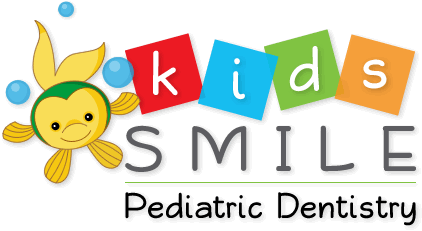What Are Dental Sealants?

Maintaining good oral hygiene is essential for preventing cavities and preserving a healthy smile. While brushing and flossing are crucial, they may not always reach the deep grooves and pits of teeth, particularly in the back molars. This is where dental sealants can help. Dental sealants provide an extra layer of protection against cavities, making them an effective preventive dental treatment for both children and adults.
Understanding Dental Sealants
Dental sealants are thin, protective coatings applied to the chewing surfaces of molars and premolars. These teeth have deep grooves and pits that can easily trap food and bacteria, increasing the risk of cavities. Sealants form a smooth, protective barrier over these areas, preventing plaque and food particles from getting stuck.
Sealants are usually made from a biocompatible plastic resin that bonds to the tooth enamel. Once applied and hardened, they blend naturally with the tooth, providing discreet and durable protection. With proper care, sealants can last for several years before needing reapplication.

Who Should Get Dental Sealants?
Dental sealants are commonly recommended for:
Children and Teenagers
Since permanent molars typically erupt around ages six and 12, applying sealants at this stage can provide crucial protection during cavity-prone years.
Adults Prone to Cavities
Sealants can enhance the protection of cavities in individuals with deep grooves in their molars or a history of cavities.
People With Deep Tooth Grooves
Some individuals naturally have deeper grooves on their molars, making it harder to clean them effectively. Sealants can help protect these areas from decay.
Sealants significantly reduce the likelihood of cavities developing in vulnerable teeth by acting as a barrier against bacteria and plaque.
Benefits of Dental Sealants
Dental sealants offer numerous advantages that contribute to better oral health, including:
Cavity Prevention
Studies show that sealants can reduce the risk of tooth decay in molars by up to 80%, making them an effective preventive solution. They act as a protective barrier, shielding the grooves and depressions of teeth from plaque and food particles. Dental professionals recommend sealants for children and teenagers, as their developing teeth are more prone to cavities. Regular dental checkups ensure that sealants remain intact and provide optimal protection.
Long-Lasting Protection
Once applied, sealants can provide protection for five to ten years, making them a cost-effective option for maintaining oral health. They are highly durable and can withstand the wear and tear of daily chewing and biting. With proper oral care, sealants can remain effective for many years without needing replacement. Dentists may check for wear and reapply sealants as needed to ensure continued protection.
Painless and Non-Invasive Application
Sealants are quick, painless, and do not require drilling or anesthesia. They involve cleaning the tooth surface, applying a special gel, and then sealing the area with a protective coating. Patients can resume their normal activities immediately after the procedure, making sealants ideal for individuals of all ages, including children who may be anxious about dental treatments.
Cost Savings
Preventing cavities with sealants helps avoid costly dental treatments such as fillings, crowns, and root canals in the future. Investing in sealants early can significantly reduce long-term dental expenses and the need for invasive procedures. Many dental insurance plans cover the cost of sealants for children and adolescents, making them an affordable preventive option. By protecting teeth from decay, sealants help maintain a healthy smile and reduce the risk of oral health complications.
Improved Oral Hygiene
Sealants make it easier to maintain clean tooth surfaces by preventing food particles from accumulating in hard-to-reach areas. They create a smooth surface on the teeth, which helps reduce plaque buildup and lowers the risk of gum disease. Parents find that sealants provide added protection for children who may struggle with thorough brushing techniques. When combined with regular brushing and flossing, sealants enhance oral hygiene and improve long-term dental health.
How Are Dental Sealants Applied?
The process of applying dental sealants is simple and can usually be completed in one dental visit. Here’s what to expect:
Cleaning the Teeth
The dentist or hygienist thoroughly cleans the tooth surface to remove any plaque and food debris, ensuring a strong bond. This step is crucial as it prevents bacteria from being trapped under the sealant. A rotating brush and a gentle cleaning solution are typically used to scrub the tooth surface effectively. Once cleaned, the tooth is rinsed and dried to prepare it for the next step in the process.
Drying and Etching
The tooth is dried, and a special gel is applied to roughen the surface slightly. This process helps the sealant adhere properly to the enamel. The etching gel creates tiny microscopic pores that enhance the bonding strength of the sealant. After a few seconds, the gel is rinsed off, and the tooth is thoroughly dried again to prevent any moisture from interfering with the sealant application. This step is critical to achieving a durable and long-lasting seal.
Application of the Sealant
The liquid sealant is carefully painted onto the tooth’s chewing surface, filling in the grooves and pits. It flows easily into the deep crevices of the tooth, creating a protective barrier against bacteria and food particles. The dentist ensures an even and thorough application to cover all vulnerable areas. The process is quick and painless, providing immediate protection once it hardens.
Curing With Light
A special curing light hardens the sealant, ensuring it bonds securely to the tooth. The light activates the sealant material, causing it to set within seconds. The dentist moves the light across the tooth surface to ensure complete curing and durability. Once hardened, the sealant forms a smooth, protective layer resistant to wear and tear.
Final Check
The dentist checks the sealant to ensure it fits properly and does not interfere with the bite. Any excess sealant is trimmed or adjusted for a comfortable and natural feel. The dentist may also ask the patient to bite down to confirm the alignment and make any necessary corrections. Regular follow-ups will help monitor the condition of the sealant over time.
The entire procedure is painless and typically takes only a few minutes per tooth.
Common Myths About Dental Sealants
Despite their benefits, several misconceptions about dental sealants exist. Let’s clear up some common myths:
Myth 1: Sealants Are Only for Children
Although sealants are commonly applied to children’s teeth, adults can also benefit from them, especially if they have deep grooves or are prone to cavities.
Myth 2: Sealants Contain Harmful Chemicals
Modern dental sealants are made from safe, biocompatible, extensively tested materials. They do not contain harmful substances and are safe for long-term use.
Myth 3: Sealants Replace Brushing and Flossing
Sealants provide extra protection but do not replace daily oral hygiene habits. Regular brushing, flossing, and dental visits are still essential.
Myth 4: The Application Process is Painful
Applying sealants is completely painless and requires no drilling or numbing. It’s a quick and comfortable procedure.
Myth 5: Sealants Are Permanent
While durable, sealants do wear down over time and may need to be reapplied every few years to maintain effectiveness.
How Long Do Dental Sealants Last?
Dental sealants can last anywhere from five to ten years, depending on oral habits and regular dental checkups. Over time, they may wear down due to chewing and require touch-ups. During routine dental visits, your dentist will check the condition of the sealants and recommend reapplication if necessary.
Good oral hygiene practices, such as brushing twice a day and limiting sugary foods, can help extend the lifespan of sealants.
How Much Do Dental Sealants Cost?
The cost of dental sealants varies based on factors such as the number of teeth being treated, the dental provider, and location. On average, sealants cost between $30 and $60 per tooth.
Many dental insurance plans cover the cost of sealants, particularly for children and teenagers. Check with your provider to understand coverage options. Investing in sealants can ultimately save money by preventing more costly dental procedures in the future.

Dental Sealants for Improved Oral Health
Dental sealants are an effective and affordable way to protect teeth from cavities and decay. Whether for children, teenagers, or adults, sealants provide long-lasting protection and contribute to better oral health.
If you’re considering dental sealants for yourself or a family member, speak with your dentist to see if they’re the right option for your dental needs. By taking proactive steps today, you can maintain a healthier, cavity-free smile for years to come.
Visit our Kids Smile Pediatric Dentistry blog to learn more about our family dentistry services in Oceanside, CA.
